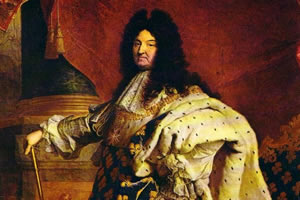With the development of the Christian faith across Europe, the Church began to have an increasingly broader social and political role in medieval times. Since their conjunction with the Roman State, ecclesiastical members made efforts to organize their own hierarchy, determine beliefs, and bring about the conversion of pagans. In the fourth century, the Council of Nicaea defined the doctrinal bases of religion and the fight against interpretive dissent.
In the next century, the hierarchy of the Church was organized in a complex structure. At the base were the priests, responsible for running the parishes scattered in the same diocese. Soon after, the bishops took charge of a province and the archbishops of the provincial capitals. At the top were the patriarchs, who took over the most important cities; and the pope, the ultimate leader who determined the actions of all those who occupied the lower ranks.
As time went by, we observed that these actions of religious and administrative organization began to coexist with a different situation. The donation of fiefs as a sign of devotion ended up turning the Church into a large landowner. In this new context, the influence exercised in the field of faith began to extend to the political and economic field. Before long, celibacy among clergy appeared as a measure that conserved ecclesiastical properties.
Do not stop now... There's more after the advertising ;)
The Church's constant involvement with political and economic issues opened doors for another division within the religious institution. In the Low Middle Ages, orders appeared interested in abstaining from material issues and living only in terms of the spirituality plan. Through vows of chastity, poverty, and silence, these clerics sought a higher spiritual experience, far removed from the temptations of the material world.
Thus was born the monastic movement, where the cenobites, better known as monks, inhabited the interior of the monasteries in search of the fulfillment of this life of spiritual resignation. In the 6th century, the monk Benedict of Nursia founded the Benedictine monastic order, considered the first group of monks in the entire Middle Ages. Soon after, the other monastic orders of the Church were inspired by the guidelines founded by the “Rule of St. Benedict”.
Those members involved strictly with the spiritual question would be recognized as members of the regular clergy, that is, those who lived in accordance with the rules of the monasteries. On the other hand, religious leaders linked to political and economic issues began to incorporate the secular clergy. In this subdivision, Church representatives were involved in the administration of wealth and actively interfered in the political affairs of the time.
By Rainer Sousa
Graduated in History
Would you like to reference this text in a school or academic work? Look:
SOUSA, Rainer Gonçalves. "Clergy"; Brazil School. Available in: https://brasilescola.uol.com.br/historiag/o-clero.htm. Accessed on June 27, 2021.


